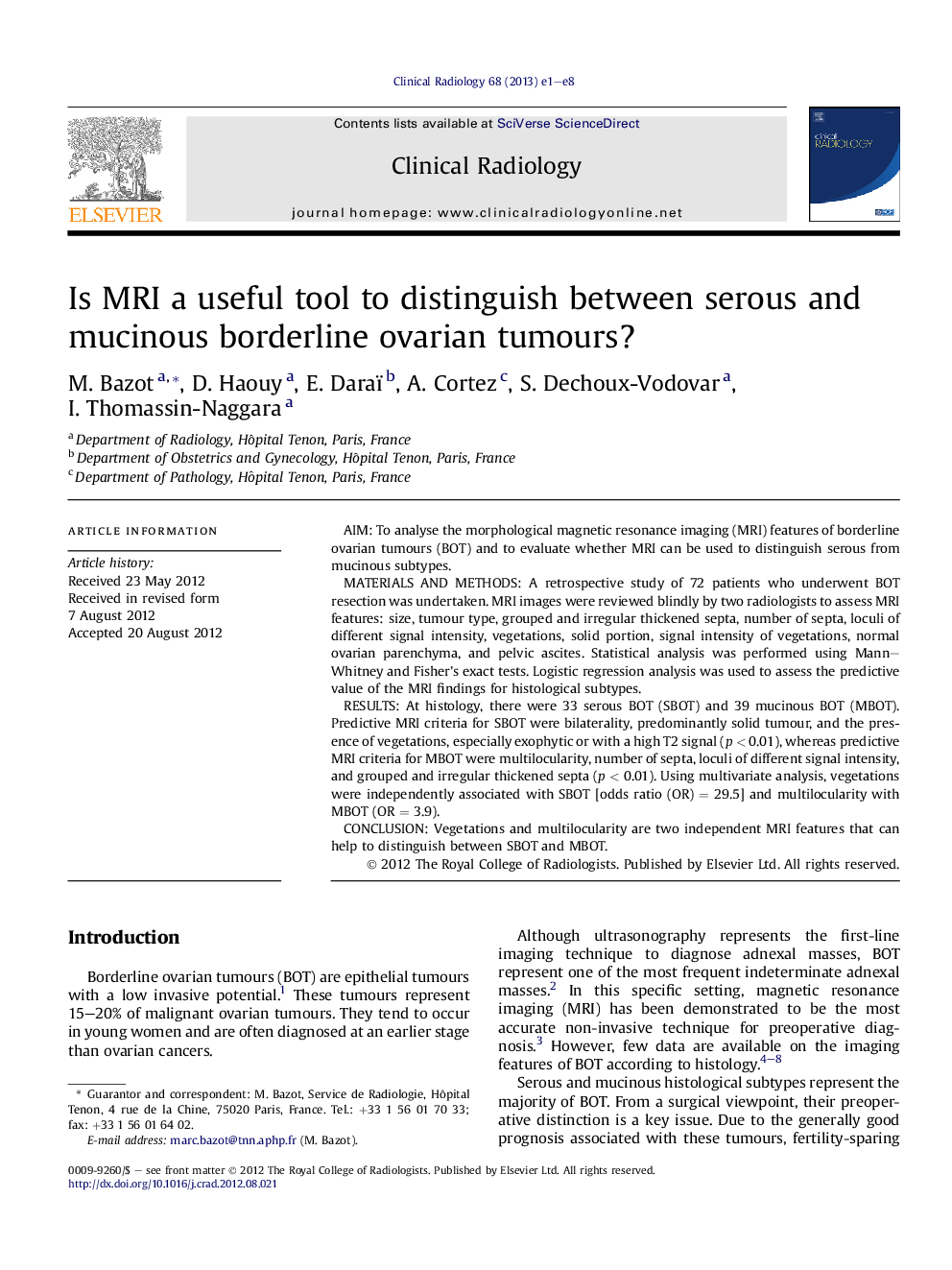| Article ID | Journal | Published Year | Pages | File Type |
|---|---|---|---|---|
| 3982266 | Clinical Radiology | 2013 | 8 Pages |
AimTo analyse the morphological magnetic resonance imaging (MRI) features of borderline ovarian tumours (BOT) and to evaluate whether MRI can be used to distinguish serous from mucinous subtypes.Materials and methodsA retrospective study of 72 patients who underwent BOT resection was undertaken. MRI images were reviewed blindly by two radiologists to assess MRI features: size, tumour type, grouped and irregular thickened septa, number of septa, loculi of different signal intensity, vegetations, solid portion, signal intensity of vegetations, normal ovarian parenchyma, and pelvic ascites. Statistical analysis was performed using Mann–Whitney and Fisher's exact tests. Logistic regression analysis was used to assess the predictive value of the MRI findings for histological subtypes.ResultsAt histology, there were 33 serous BOT (SBOT) and 39 mucinous BOT (MBOT). Predictive MRI criteria for SBOT were bilaterality, predominantly solid tumour, and the presence of vegetations, especially exophytic or with a high T2 signal (p < 0.01), whereas predictive MRI criteria for MBOT were multilocularity, number of septa, loculi of different signal intensity, and grouped and irregular thickened septa (p < 0.01). Using multivariate analysis, vegetations were independently associated with SBOT [odds ratio (OR) = 29.5] and multilocularity with MBOT (OR = 3.9).ConclusionVegetations and multilocularity are two independent MRI features that can help to distinguish between SBOT and MBOT.
